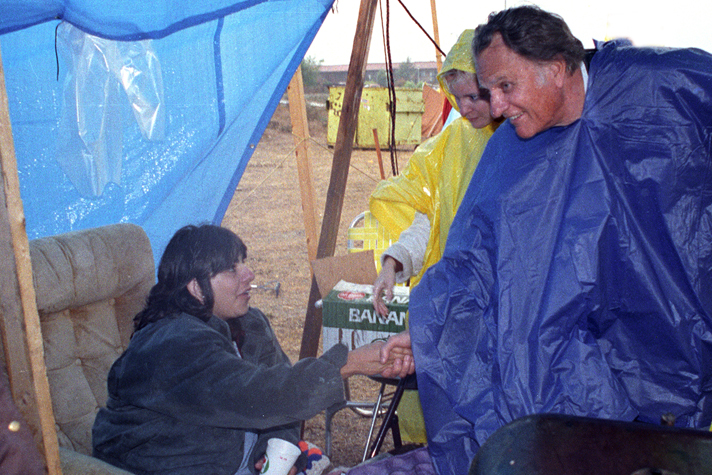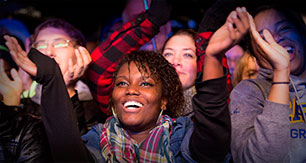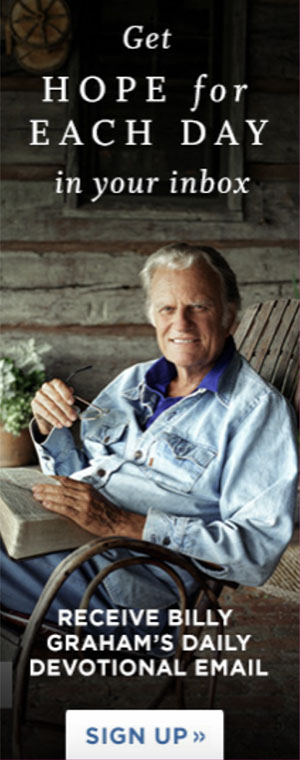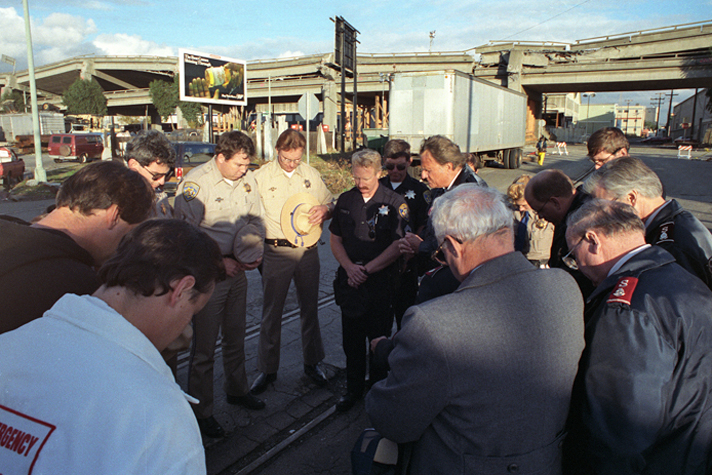
Jeff Wilson worked as a California-based Associated Press reporter for nearly 30 years, covering all kinds of disasters, political players and historical moments. But one of his greatest memories is the few hours he spent with Billy Graham following a 1989 earthquake that struck Wilson’s home state.
It was around 5 p.m. on Oct. 17—25 years ago this Friday—that a 6.9-magnitude earthquake hit Loma Prieta in the San Francisco Bay Area, not far from Santa Cruz. Wilson, who was based in Los Angeles, was off work that day, but soon found himself covering the devastation several hours away.
More than 60 people lost their lives in the jolting, 15-second earthquake, most due to the collapse of the Cypress Street Viaduct, a two-tier, multi-lane concrete bridge. Thousands more were injured in the chaotic disaster, and many lost their homes and businesses. San Francisco’s Candlestick Park was thrown into a panic when the ground shook violently at the start of the third game of the World Series.
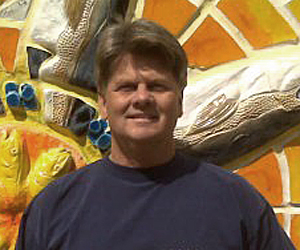
Wilson heard Mr. Graham would be in the area to visit grieving residents and was assigned to cover his visit.
“Before I knew it, I was in the backseat of a four-door Salvation Army sedan with Billy Graham sitting next to me. That was quite a shock,” he said, adding that he’s still not sure which one of them had a more captive audience. They talked about their families and solemnly shook their heads at the heaps of rubble they saw out the car window.
The Salvation Army was also there to hand out food and clothes to residents of Watsonville, California, where people were sleeping in the streets, afraid to find shelter inside. They had no water or electricity.
“It was pouring rain … and cold,” Wilson said.
He remembers how the Salvation Army gave Mr. Graham a yellow raincoat that he then turned around and gave to Wilson.
The seasoned reporter came away with a unique opportunity that day to see a world-renowned evangelist in his element—meeting people face to face and offering them hope.
A story he wrote for AP a week after the earthquake talked about Mr. Graham’s compassion for the people affected by the disaster and his unwavering faith in God despite the destruction.
“Slogging through muddy tent encampments teeming with earthquake refugees,” Wilson’s story began, “evangelist Billy Graham told frightened victims not to let their faith be rattled.”
The area the pair visited was a largely Hispanic, agricultural community.
“When Billy Graham got out of the car to greet these groups of people here and there, they were sort of stunned. … He’s such a tall, imposing figure,” Wilson said of the 6-foot-3 evangelist. “They couldn’t help but stare.”
Mr. Graham held their hands and tried to calm their nerves. He shook hands with people who were waiting in line for food, using cardboard boxes for umbrellas. He later donated money to earthquake relief.
“They so appreciated him being there,” Wilson said. “There were tears in their eyes.”
Watsonville’s mayor at the time, Elizabeth Murphy, was also glad to see Mr. Graham. She met with him at the city’s disaster center where he led a prayer, thanking volunteers who were working to clean up the community.
Wilson quoted Mr. Graham in his story: ”I think we have to recognize that God is a God of love and he doesn’t allow a thing like this to happen without a purpose.” Mr. Graham added that he didn’t know what that purpose was but that God is stronger than any building that can crumble.
Wilson grew up watching Mr. Graham on TV and says he still catches former sermons from time to time. He quickly discovered during his coverage of the ’89 earthquake that the preacher is just as concerned for people in real life as he is on TV.
“It was a big thrill for me,” Wilson said about meeting the well-traveled preacher. As a reporter, Wilson was used to covering the negative side of public figures, but said with Mr. Graham, “it was such a great moment because he is such a great man.”
Wilson, who became a Christian in 1971, now calls his Billy Graham study Bible “my most prized possession.” Through all the years of covering riots, trials, wildfires and world leaders, he said his interaction with Mr. Graham back in 1989 stands out as one of two highlights of his career. The second is covering former president Ronald Reagan.
There’s just one regret he has from that day with Mr. Graham.
“This was back before the time of iPhones,” he said. “I wish I had a selfie with him, but I don’t.”
Are you prepared? Learn how to share hope with those around you in the midst of life’s tragedies through BGEA’s Sharing Hope in Crisis online course.
